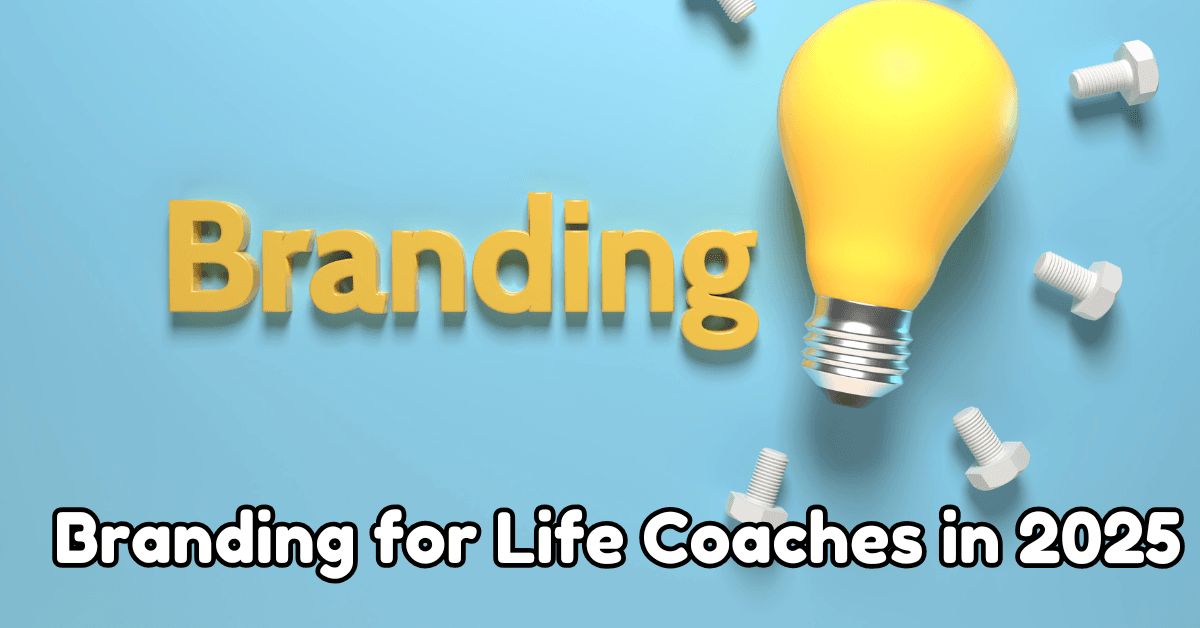
Search Site
CTRL+KSearch Site
CTRL+KPublished: 19 Dec 2024

In 2025, the coaching world has grown even more dynamic—and more crowded. Standing out means more than showcasing your credentials; it means creating a brand that resonates deeply with your target audience. The right branding strategy not only helps you distinguish yourself from other life coaches, but also clarifies your unique promise and builds trust long before a client even books a call.
Branding goes beyond your website colors or the tone of your social media posts. It’s the story you tell, the mission that drives you, and the values you hold. When your brand is executed well, it becomes a magnet for clients who intuitively understand what sets you apart. It invites them into a narrative where you’re their trusted guide, helping them reach their goals and transform their lives.
Ready to refine and amplify your coaching brand? Let’s begin by clarifying what a brand really is and why it matters so much to your coaching business in 2025.

A brand is not just a logo, a tagline, or a clever business name—it’s the essence of your identity as a coach. Think of it as the full experience that people have when they encounter you: the tone of your emails, the consistent look and feel of your website and social media, and the way your clients describe their work with you to others. Your brand shapes expectations, sets the stage for transformation, and influences how potential clients perceive your credibility and expertise.
For coaches, a strong brand holds particular significance. When you guide clients through personal or professional growth, you’re asking them to trust you with their deepest hopes and fears. A powerful brand, grounded in authenticity and clarity, breaks down hesitation and builds confidence in the outcomes you promise.
Moreover, a compelling brand ensures you stand out in a saturated market. As coaching continues to soar in popularity, having a distinctive brand voice, a clear mission, and a memorable story can mean the difference between being just another coach and being the coach your ideal clients can’t wait to work with. If you’re curious about how others are leveraging branding and online presence to get ahead, take a look at these resources:
Each resource will help you better understand how to connect the dots between your brand identity and your marketing efforts.
Just like a home, your brand needs a strong foundation. This foundation is built on the core elements that define who you are as a coach, who you serve, and what sets you apart. Consider the following building blocks:
To help clarify your brand story and messaging, consider using the frameworks offered by this insightful storybrand image. Tools like this can guide you through structuring your brand narrative so it resonates with the right audience—people who understand your mission and align with your approach.
For a deeper dive into the art and science of brand storytelling, you might find this recommended book invaluable: Brand Storytelling Resource. By learning to weave your brand’s purpose, values, and promise into a compelling narrative, you’ll create a powerful emotional connection with your potential clients—one that encourages them to reach out, trust your expertise, and embark on a transformative coaching journey with you.

Now that you understand what a brand is and why it matters, as well as the core elements that form your brand’s foundation, it’s time to put it all into action. The following seven-step process will help you translate abstract ideas—like your values, story, and voice—into tangible brand assets and strategies that resonate with your audience in the year ahead.
Start by diving deep into who your coaching clients truly are.
By understanding who your ideal clients are—and what they value—you ensure your branding choices connect deeply with the people you serve.
Think of your brand as a person your clients would enjoy spending time with. What adjectives describe this “person?” Empathetic, energetic, wise, or playful?
Your brand’s voice will shape how clients perceive you before they ever interact with you directly, fostering trust and familiarity.
Your origin story is what differentiates you from every other coach with similar credentials. It illustrates why you became a coach, the challenges you overcame, and the unique insights you bring to your clients.
Your story is your brand’s emotional anchor. It lets clients see themselves in your journey and sparks a connection that makes them eager to learn from you.
This step transforms your story into a clear compass for your brand.
These elements ensure every future branding decision is aligned, focused, and purposeful, making your brand feel coherent and reliable to clients.
Your visual brand elements—logo, colors, fonts, imagery—are your brand’s “face.”
A cohesive visual identity ensures your brand is recognizable anywhere it appears, from webinar presentations to online ads.
Brand consistency builds trust. Clients begin to associate certain colors, tones, and messages with you. Maintain this consistency across every client touchpoint:
Over time, potential clients will start to recognize you instantly, thanks to your distinct brand presence.
Brands aren’t static. As you grow professionally and learn more about your clients, you can refine your messaging, adjust your visuals, or focus on a new sub-niche.
Remember, refinement isn’t a sign of failure—it’s a sign of growth. Each adjustment keeps your brand aligned with who you’ve become as a coach and what your clients need from you.
Your brand isn’t just a set of visual and verbal guidelines—it’s a living entity rooted in your personal narrative and core values. This is where the magic of storytelling comes in. When you reveal the “why” behind your coaching practice, you forge a human connection that standard marketing copy can’t replicate.
By weaving together stories that illustrate your values, struggles, and successes, you offer clients more than a service—you offer them a role in a meaningful narrative. They become participants in their own transformation, guided by someone who’s walked a similar path.

To bring these ideas to life, let’s look at Dean, a career coach who struggled to stand out. At first, Dean’s messaging sounded like everyone else’s: “I help you find a job you love.” While true, it wasn’t memorable. Clients scrolled right past him, not feeling any particular connection.
After working through the steps we’ve discussed, Dean transformed his approach:
The result? Clients who read Dean’s story and messaging recognized themselves in his experiences. They started booking calls, mentioning that they felt he truly “got it.” By refining his branding—something essential for “branding for life coaches in 2025”—Dean attracted the exact clients he was best equipped to serve.
Branding sets the stage, but it’s your marketing that brings the show to life. Think of branding as the script and marketing as the performance. When you align the two, you create a seamless experience that guides potential clients from discovery to enrollment.
In short, branding and marketing work hand in hand. Branding provides the core identity and values; marketing leverages those elements to reach, inspire, and engage the right people. When done well, your marketing isn’t just promotional—it’s a natural extension of your brand, attracting clients who align with your mission, value your perspective, and are ready to invest in their transformation.
Your brand is not a static entity; it’s a living, breathing part of your coaching practice. As your business grows, as client needs shift, and as new trends emerge, your brand should evolve accordingly. Refinement is a sign of growth, not inconsistency. By revisiting your mission statement, values, story, and visuals each year—or even each quarter—you ensure that your brand remains a true reflection of who you are as a coach and what your clients need from you.
By treating your brand as an evolving asset, you position yourself to stay ahead of the curve. Over time, this flexibility makes your brand more durable and appealing, allowing it to thrive in an ever-changing coaching landscape.
“Branding for life coaches in 2025” isn’t just a box to check—it’s a cornerstone of your coaching business. By understanding your target audience, crafting a unique voice, sharing a compelling story, defining clear values, and embracing a cohesive visual identity, you set the stage for meaningful connections. Add to that the power of consistent marketing and the willingness to adapt, and you have the blueprint for a truly magnetic brand.
This isn’t about perfection. It’s about authenticity, clarity, and evolution. Clients choose coaches who make them feel seen, understood, and inspired. Your brand, built on a foundation of honest storytelling, aligned values, and tailored messaging, will attract those clients effortlessly—people who resonate with your journey and trust your guidance.
As you move forward, remember that branding is an ongoing process. Keep revisiting your brand narrative, refining your visuals, and responding to the world around you. When you do, you create a coaching brand that not only survives but thrives in 2025 and beyond. Your authentic brand will become the beacon that guides the right clients straight to your virtual doorstep, eager and ready to transform their lives.
No results available
Reset